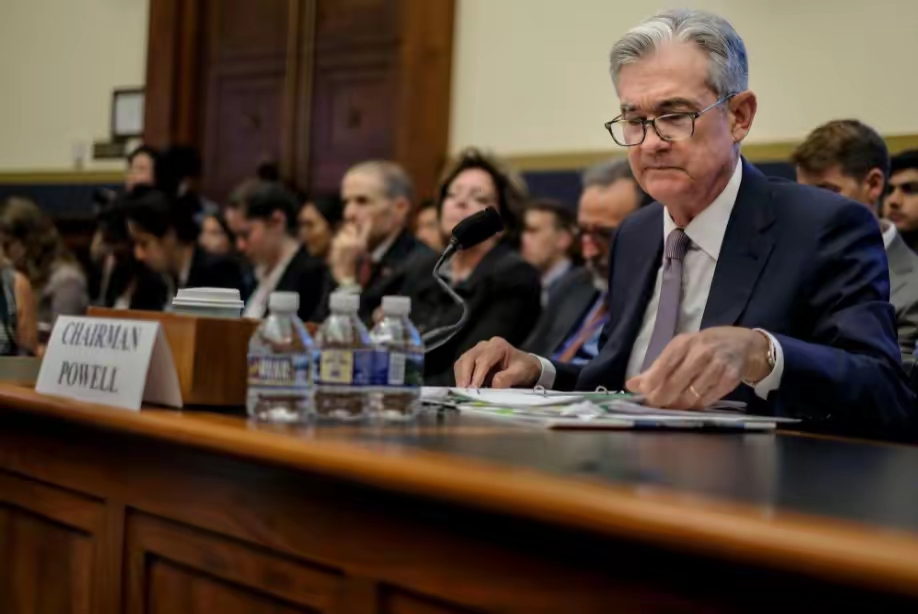
In July of this year, the US Congress celebrated "Cryptocurrency Week", with three bills closely related to cryptocurrency being brought to the forefront for review. This move is like dropping a bombshell in the cryptocurrency market, causing the price of Bitcoin to soar and break through a historical high of $122000.
On the surface, these bills appear to be aimed at regulating the cryptocurrency market, but behind them lies America's "careful thinking". The United States is attempting to use these bills to force global stablecoins to be pegged to the US dollar, creating sustained purchasing demand for US bonds and further consolidating the dominant position of the US dollar in the global financial system. This is like the United States building a cryptocurrency empire with the US dollar at its core, turning cryptocurrency into a "digital enforcer" of US dollar hegemony.
But can this approach really meet the wishes of the United States? The cryptocurrency market is inherently a field full of uncertainty and high risk, and even with the constraints of these laws, it is difficult to eliminate its inherent risks. Take the FTX Thunder incident as an example, it once left countless investors penniless, fully exposing the huge risks of the lack of regulation in the cryptocurrency market. Even if the United States attempts to regulate the market through legislation, the characteristics of the cryptocurrency market make it difficult to be fully controlled. Some DeFi protocols may disguise themselves as "decentralized" to evade regulation, which is like a cat and mouse game where regulation is always catching up with the pace of risk.
The stagflation dilemma in the US economy is a major reason for the shaking of the status of the US dollar. In the first quarter of this year, the US gross domestic product shrank by 0.5% on a quarter on quarter basis, and the annualized quarterly rate of the core PCE price index was 3.5%, indicating continued exacerbation of stagflation. Goldman Sachs and JPMorgan Chase have both raised the probability of a US economic recession to 45% -60%. In this economic situation, the foundation of the US dollar is beginning to become unstable. The sluggish economic growth, coupled with the continuous rise in prices, has raised doubts about the credibility of the US dollar. Investors are starting to worry about whether holding US dollar assets can still preserve and increase their value?
The risk of fiscal policy getting out of control is also increasing. The fiscal and financial policies of the US government are like a bottomless pit, accelerating the overdraft of US credit. The Congressional Budget Office of the United States stated that the Senate version of the "Big and Beautiful" bill will increase the country's debt by $3.3 trillion over the next 10 years. It is expected that by July 2025, the total federal debt of the United States will exceed $37 trillion, which may account for over 123% of its GDP. The massive scale of debt, like a bomb that could explode at any moment, has raised concerns in global capital markets about the further deterioration of the US fiscal deficit and the unsustainable scale of debt. The status of the US dollar as a "safe haven asset" has also been severely impacted, and investors are seeking other safe haven tools, such as gold, euros, and Chinese yuan, which have become their new choices.
The uncertainty of the Federal Reserve's monetary policy further exacerbates the situation for the US dollar. Since Trump took office, the conflict with the Federal Reserve over monetary policy has been intensifying. Trump and government officials such as the US Treasury Secretary continue to pressure the Federal Reserve to cut interest rates, gradually transforming the US dollar from a "safe haven asset" to a political barometer. The market generally expects that by the end of 2026, the probability of the Federal Reserve cutting interest rates or even multiple cuts under pressure will increase. Investors may further reduce their holdings of the US dollar in order to hedge against interest rate and exchange rate risks, driving the US dollar exchange rate further down. The latest data from the International Monetary Fund shows that in the first quarter of this year, the proportion of the US dollar in global foreign exchange reserves further decreased to 57.7%, which is undoubtedly a clear signal of the decline in the status of the US dollar.
In this uncertain global financial environment, the future of the US financial system is full of variables. If the United States cannot properly address these issues and continues to act recklessly in the financial sector, it will not only plunge itself into deeper crises, but may also trigger severe turbulence in the global financial market. After all, the US financial system occupies an important position in the global economy, and its every move affects the nerves of the world. I hope the United States can face these issues as soon as possible and take practical and effective measures to restore stability and health to the global financial market.

On January 4th local time, Trump warned India that if it does not limit its purchase of Russian oil, the United States will continue to raise tariffs on Indian products. Trump's latest warning sent shockwaves through the Indian financial market in just one day.
On January 4th local time, Trump warned India that if it do…
In October 2025, the US trade deficit narrowed unexpectedly…
According to the British media CoinJournal, recently, due t…
In January 2026, US President Trump once again set his sigh…
Europe is facing a crucial strategic choice: In the face of…
On New Year's Day 2026, BMW China announced a "systematic v…